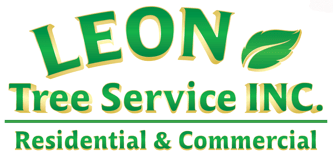Identifying Hazardous Trees: 5 Signs Your Tree Poses a Risk to Your Home
Recognizing potential tree hazards is crucial for protecting your family and maintaining a secure landscape. But how can you tell if a tree on your property is a potential danger? This guide outlines five key warning signs that indicate a tree may pose a risk and require immediate attention.
Understanding Hazardous Trees
Before identifying specific warning signs, it’s important to understand what makes a tree dangerous. A tree becomes hazardous when its roots, trunk, or branches weaken, increasing the risk of falling and causing property damage or injury.
Common signs of a hazardous tree include:
- Leaning trunks
- Cracked bark
- Exposed, decayed, or severed roots
- Dead or hanging limbs
Environmental factors like strong winds, storms, and decay can further weaken a compromised tree, making timely assessment critical. A professional tree risk evaluation can determine whether pruning, bracing, or removal is necessary. Regular inspections not only enhance safety but also help maintain healthy trees and a well-kept landscape.
The Importance of Tree Risk Assessment
Why is a tree risk assessment important? Regular assessments help detect problems before they lead to costly damage or accidents. Trees naturally age, but disease, pest infestations, and environmental stressors can accelerate their deterioration.
A professional inspection can identify weaknesses and recommend maintenance strategies to extend your tree’s lifespan while keeping your home safe. Additionally, assessment reports guide future tree care, ensuring your landscape remains both beautiful and secure.
Sign #1: Deteriorating Roots
Roots anchor trees and provide essential nutrients. If a tree’s roots are compromised, its stability is at risk, making it more likely to fall.
How to Identify Root Problems
- Visible Root Damage – Exposed, severed, or decaying roots may indicate underlying issues.
- Soil Movement – Shifting or heaving soil around the tree base suggests root upheaval or decay.
Prevention & Maintenance
To prevent root damage, avoid disturbing the soil around trees, especially during construction. Regular mulching and proper watering also support root health, keeping trees stable and strong.
Sign #2: Cracks or Cavities in the Trunk
The tree trunk supports the entire structure. Cracks or cavities can signal internal decay, making the tree vulnerable to collapse.
How to Assess Trunk Integrity
- Deep Cracks & Holes – Large fissures or cavities may indicate significant structural weakness.
- Leaning Trees – A tree developing a new lean suggests an unstable root system or structural imbalance.
Prevention & Maintenance
If you notice significant trunk damage, consult a professional arborist. Some issues can be managed with bracing or pruning, while severe decay may require tree removal.
Sign #3: Dead or Hanging Branches
While branches may occasionally fall during storms, frequent dead or broken branches under normal conditions are a sign of trouble.
How to Identify Unstable Branches
- Frequent Breakage – If branches regularly fall without external stress (like high winds), the tree may be unhealthy.
- Deadwood Accumulation – A significant amount of fallen deadwood suggests declining tree health.
Prevention & Maintenance
Regular pruning removes weak branches before they become a hazard. Trimming also improves airflow, helping trees stay strong and resilient.
Sign #4: Signs of Disease or Infestation
Tree diseases and insect infestations can compromise a tree’s structure and stability. Identifying early warning signs can prevent further damage.
How to Spot Disease & Pests
- Discolored or Wilting Leaves – Yellowing, browning, or premature leaf drop may signal disease.
- Insect Activity – Holes in the bark, sawdust-like debris, or visible pests may indicate an infestation.
Prevention & Maintenance
Consult a certified arborist if you suspect disease or pest issues. Proper treatment and preventative care can help restore tree health.
Sign #5: Damage from Severe Weather
Extreme weather, such as thunderstorms, strong winds, and lightning, can weaken trees and create safety hazards.
How to Assess Storm Damage
- Splintered Branches – High winds can cause branches to split or break.
- Lightning Strikes – Scorch marks or deep vertical cracks may indicate lightning damage.
Prevention & Maintenance
After storms, inspect trees for signs of damage. If you notice structural weaknesses, consult an arborist to determine whether pruning, bracing, or removal is necessary.
Ensuring Home Safety Through Tree Care
Proactive tree care is essential for home safety. Neglected trees can pose risks to both property and people, but regular maintenance prevents potential damage while enhancing your landscape’s appeal.
Essential Tree Safety Practices
- Schedule Expert Assessments – Hire a certified arborist for annual inspections to detect hazards early.
- Commit to Preventative Maintenance – Regular pruning, proper watering, and mulching help maintain tree health and stability.
- Stay Informed – Different tree species have unique care requirements. Understanding their needs ensures proper maintenance.
By taking these precautions, homeowners can prevent property damage, boost curb appeal, and create a safer living environment.
Trusting the Experts: Why Choose Leon Tree Service Inc.
Managing tree hazards can be challenging, but expert help is available. At Leon Tree Service Inc., our certified professionals specialize in tree risk assessment, pruning, removal, and maintenance.
We stand out by combining advanced techniques with a personalized approach, ensuring your trees remain beautiful and safe.
Protect your home and landscape by scheduling a comprehensive tree risk assessment today. Visit our website to learn more and book an appointment with our expert team!
